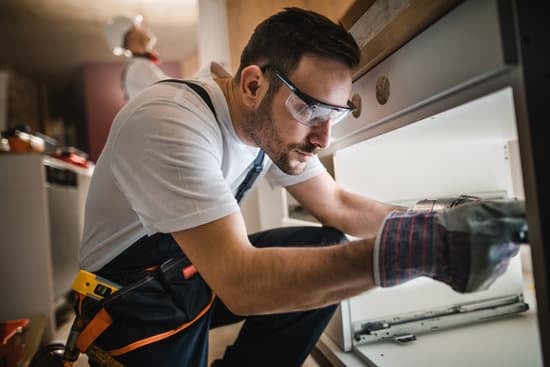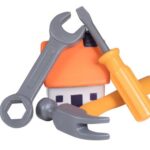Are you wondering how to do home improvements cheap? Whether you’re looking to add value to your home or simply want to enhance its overall aesthetic, making budget-friendly home improvements can be a rewarding endeavor.
In this article, we will explore the various ways in which homeowners can tackle home improvement projects without breaking the bank. From DIY projects to finding affordable materials and services, we’ll provide practical tips on how to achieve beautiful and impactful improvements within budget constraints.
Home improvements not only allow you to personalize and enhance your living space but also have the potential to increase the value of your property. By addressing areas of your home that need attention, you can create a more functional and aesthetically pleasing environment for yourself and your family. Additionally, making strategic improvements can significantly boost your home’s market value, providing a return on investment should you decide to sell in the future.
In the following sections, we will delve into assessing your home improvement needs, budget-friendly DIY ideas, sourcing affordable materials, saving money on services, prioritizing projects, effective budgeting strategies, and maximizing the impact of small improvements. Whether you’re a seasoned DIY enthusiast or a first-time homeowner looking for cost-effective solutions, this article will provide valuable insights for achieving desirable home upgrades without breaking the bank.
Assessing Your Home Improvement Needs
When it comes to home improvement, the first step is to assess and identify the areas of your home that need attention. Whether it’s a leaky faucet in the kitchen or a dingy bathroom, understanding what needs to be improved is crucial in prioritizing your projects. Here are some tips on how to assess your home improvement needs without breaking the bank.
Start With Safety and Structural Integrity
Inspect areas of your home that pose safety risks or have structural issues. Addressing these concerns should be top priority to ensure the well-being of your family and the longevity of your home.
Consider Functionality and Efficiency
Assess which areas of your home could benefit from increased functionality or energy efficiency. This could include upgrading outdated appliances, improving insulation, or reconfiguring living spaces for better flow.
Once you’ve identified all the areas that need improvement, prioritize them based on urgency and budget. Consider tackling smaller, cost-effective projects first before moving on to larger ones. This approach allows you to make incremental improvements over time without putting a strain on your finances.
By carefully assessing your home improvement needs and prioritizing them based on urgency and budget, you can embark on cost-effective projects that will enhance the comfort, aesthetics, and value of your home without breaking the bank.
Budget-Friendly DIY Home Improvement Ideas
One of the best ways to save money on home improvements is by tackling some projects yourself. There are plenty of budget-friendly DIY home improvement ideas that can add value and appeal to your home without breaking the bank. Whether you’re a seasoned DIY-er or new to the world of home improvement, there are plenty of projects you can take on with a little bit of research and effort.
One easy and cost-effective DIY project is painting. A fresh coat of paint can completely transform a room and give it a whole new look. Painting is a relatively simple task that most homeowners can do themselves, saving money on professional painters. Another great idea is to update cabinet hardware in kitchens and bathrooms. Simply swapping out old, dated hardware for new, stylish options can make a big impact at a low cost.
In addition to these projects, consider adding extra storage space with shelves or organization systems, updating light fixtures for a modern touch, or creating a statement wall with peel-and-stick wallpaper. These are just a few examples of how homeowners can improve their living spaces in an affordable way.
| DIY Project | Estimated Cost |
|---|---|
| Interior Painting | $50-$200 (depending on room size) |
| Cabinet Hardware Replacement | $20-$100 (depending on number of cabinets) |
| Wallpaper Accent Wall | $30-$100 (depending on size of wall) |
Finding Affordable Home Improvement Materials
Thrift Stores
One of the best ways to find budget-friendly materials for your home improvement projects is by visiting thrift stores. These stores often have a wide selection of items such as furniture, fixtures, and decorative pieces that can be repurposed or used in DIY projects. From unique door knobs to vintage light fixtures, thrift stores offer a treasure trove of affordable home improvement materials.
Online Marketplaces
Another great source for affordable home improvement materials is online marketplaces such as Craigslist, Facebook Marketplace, and eBay. These platforms allow homeowners to browse through a wide range of used and discounted building materials, appliances, and tools. With some patience and careful searching, you can find high-quality materials at a fraction of the cost compared to buying them brand new.
Home Improvement Stores
While it may seem counterintuitive, home improvement stores also offer affordable options for materials. Many stores have clearance sections or discount areas where you can find slightly damaged or discontinued items at significantly reduced prices. Additionally, signing up for store newsletters or loyalty programs can give you access to exclusive discounts and promotions on home improvement materials.
By utilizing these resources and being creative with your choices, you can embark on your home improvement projects without breaking the bank. Whether it’s refurbishing old furniture from thrift stores or finding discounted tiles at a home improvement store, there are plenty of ways to find affordable materials for your next project.
Saving Money on Home Improvement Services
When it comes to home improvement projects, one of the biggest expenses can be the cost of hiring professionals to do the work for you. However, there are several ways to save money on home improvement services without sacrificing quality. Here are some tips for finding affordable help for your next project:
1. Get multiple quotes: Before committing to a contractor or service provider, it’s important to shop around and get multiple quotes for the work you need done. This allows you to compare prices and negotiate with different companies to get the best deal.
2. Consider DIY alternatives: For smaller home improvement projects, consider tackling the work yourself instead of hiring a professional. There are plenty of online resources and tutorials available that can guide you through DIY projects, saving you money on labor costs.
3. Look for seasonal discounts: Many contractors and service providers offer seasonal discounts or promotions during slower times of the year. Keep an eye out for these deals and take advantage of discounted rates for your home improvement needs.
By following these tips, homeowners can significantly reduce the cost of home improvement services while still achieving their desired results. With a little bit of research and creativity, it is possible to complete home improvement projects on a budget without compromising quality or style.
Prioritizing Home Improvement Projects
When it comes to home improvement projects, it’s essential to prioritize which areas of your home need the most attention based on urgency and budget. By focusing on the most crucial tasks first, you can make the most significant impact with limited resources. Here are some tips on how to prioritize home improvement projects:
1. Assess Your Home: Take a walk around your home and make note of any areas that need immediate attention. This could include a leaky roof, broken windows, or plumbing issues. Prioritize these essential repairs to ensure the safety and structural integrity of your home.
2. Consider Impact: Think about which home improvement projects will have the most significant impact on your daily life and the value of your home. Upgrading outdated appliances, refreshing worn-out flooring, or improving energy efficiency can all make a big difference without breaking the bank.
3. Budget Wisely: With a clear understanding of your financial constraints, create a budget for each home improvement project. This will help you allocate funds where they are needed most and avoid overspending.
By carefully prioritizing your home improvement projects, you can make meaningful changes to your living space without draining your bank account.
Remember that making improvements doesn’t have to be expensive – there are plenty of ways to spruce up your place without breaking the bank. Whether it’s updating fixtures, painting walls, or creating more storage space, there are countless ways to improve your home while saving money in the process.
Budgeting for Home Improvements
When it comes to home improvements, budgeting is key. Whether you’re looking to increase the value of your home or simply upgrade its aesthetics, creating a realistic budget will help you stay on track and avoid overspending. But how exactly can you budget for home improvements without breaking the bank? Here are some tips on how to do home improvements cheap.
First, take the time to assess the areas of your home that need improvement and prioritize them based on urgency and budget constraints. This will give you a clear idea of where you should allocate the majority of your budget and where you can afford to cut costs. By understanding your specific needs and limitations, you can make more informed decisions when it comes to spending on home improvement projects.
Next, consider DIY home improvement projects as a cost-effective way to upgrade your home without breaking the bank. Simple tasks such as painting walls, installing new fixtures, or even reupholstering furniture can make a significant impact on the overall look and feel of your home. Not only does this save money on labor costs, but it also allows you to customize your home in ways that align with your personal style.
Finally, when it comes to sourcing materials for your home improvement projects, be strategic about where you shop. Consider checking out thrift stores, online marketplaces, and discount outlets for affordable materials that won’t compromise quality. Additionally, keep an eye out for sales and promotions at local home improvement stores to snag great deals on high-quality materials.
By following these budgeting tips for home improvements, you can make the most of your resources while still achieving the desired upgrades for your living space. Making smart decisions about how to spend on improvements can ensure that your hard-earned money goes a long way in enhancing the beauty and value of your home.
Maximizing the Impact of Small Home Improvements
When it comes to home improvements, many homeowners believe that significant changes are necessary to make a difference in their living space. However, small and budget-friendly home improvements can have a substantial impact on the overall aesthetics and value of a home. Here are some tips on how to maximize the impact of small home improvements without breaking the bank.
One of the most cost-effective ways to enhance the look of your home is by focusing on simple upgrades such as painting walls, cabinets, or furniture. A fresh coat of paint can instantly breathe new life into any room, making it look brighter and more inviting. Additionally, changing out hardware such as doorknobs, drawer pulls, and light fixtures can give your home a modern and updated feel without spending a fortune.
Another way to maximize the impact of small home improvements is by paying attention to curb appeal. Simple landscaping projects like planting flowers, trimming hedges, and adding outdoor lighting can significantly improve your home’s exterior appearance. Making minor repairs such as fixing loose shingles or repairing cracked pathways can also enhance the overall look of your property.
Finally, consider investing in versatile multi-purpose furniture and storage solutions to maximize space and functionality within your home. Space-saving furniture pieces like foldable tables, modular sofas, and wall-mounted shelves can make a small area feel more spacious and organized. Implementing these small changes can drastically improve the usability and visual appeal of your living space.
Overall, maximizing the impact of small home improvements doesn’t always require a hefty budget. By focusing on strategic upgrades that add aesthetic value and functionality to your living space, you can achieve significant transformations while keeping costs low.
| Home Improvement | Impact |
|---|---|
| Fresh Coat of Paint | Enhances aesthetics and brightens up a room |
| Curb Appeal Projects | Improves exterior appearance and increases property value |
| Multi-Purpose Furniture | Enhances functionality and visual appeal of living space |
Conclusion
In conclusion, improving your home doesn’t have to break the bank. By following the tips and ideas outlined in this article, you can make significant improvements to your home without spending a fortune. From DIY projects to sourcing affordable materials and negotiating with contractors, there are plenty of ways to achieve beautiful home improvements on a budget.
Ultimately, the key is to assess your home improvement needs, prioritize them based on urgency and budget, and then proceed with cost-effective solutions. By creating a realistic budget and sticking to it throughout the process, you can maximize the impact of small home improvements while increasing the overall value and aesthetics of your home.
So whether it’s sprucing up your kitchen, giving your living room a makeover, or enhancing your outdoor space, there are countless opportunities for making your home beautiful on a budget. With some creativity, resourcefulness, and proper planning, you can transform your living space into a more comfortable, functional, and visually appealing environment without breaking the bank. Happy improving.

I’m thrilled to have you here as a part of the Remodeling Top community. This is where my journey as an architect and remodeling enthusiast intersects with your passion for transforming houses into dream homes.





